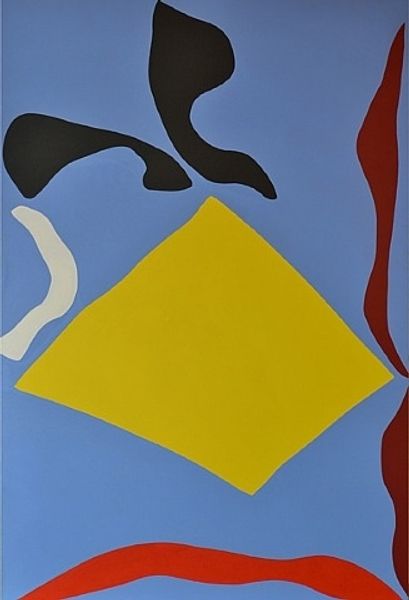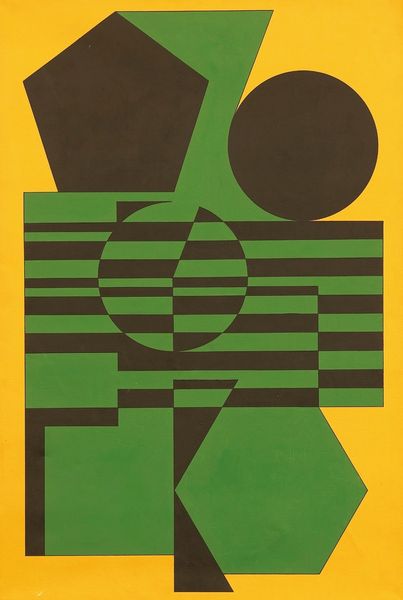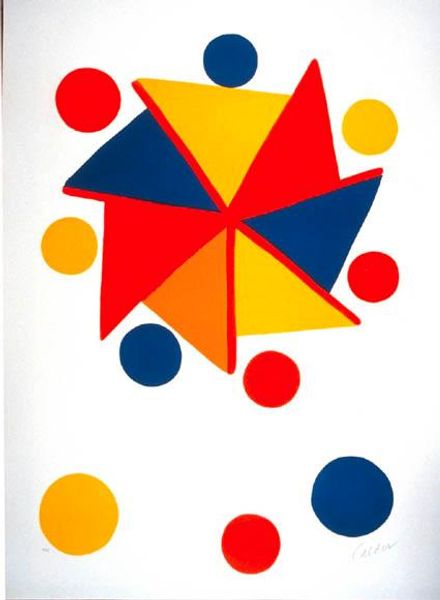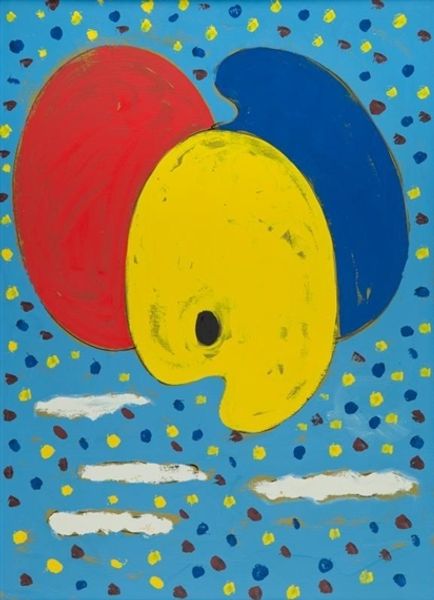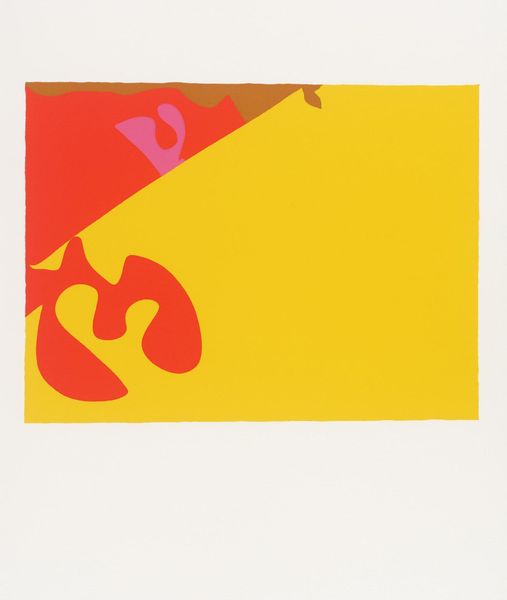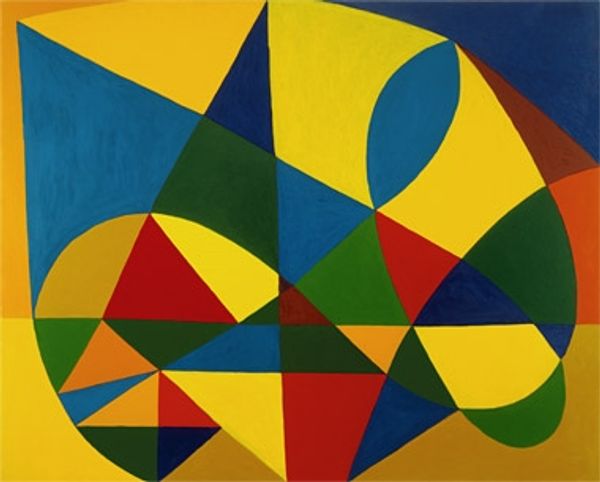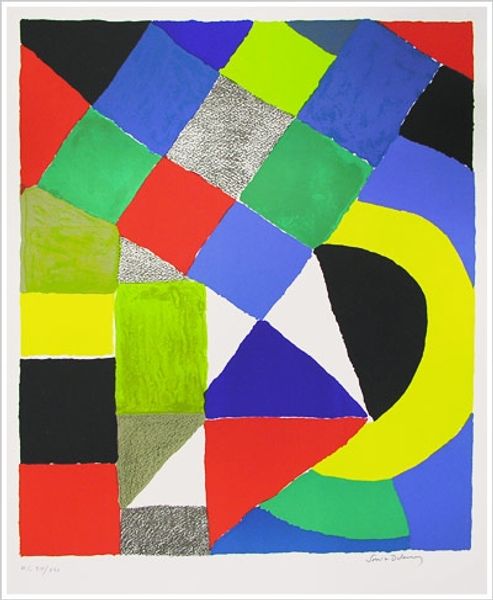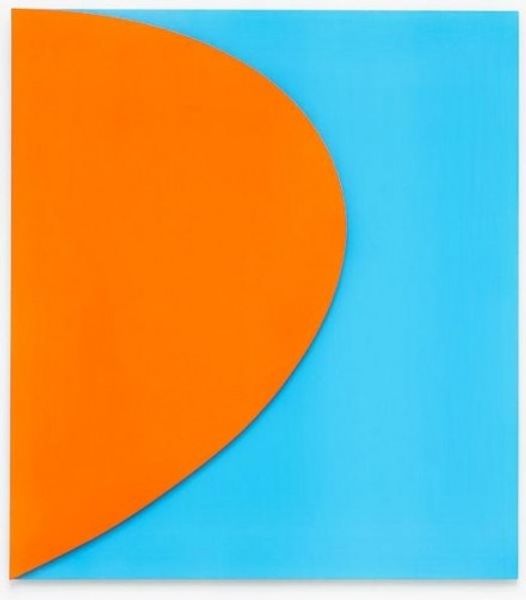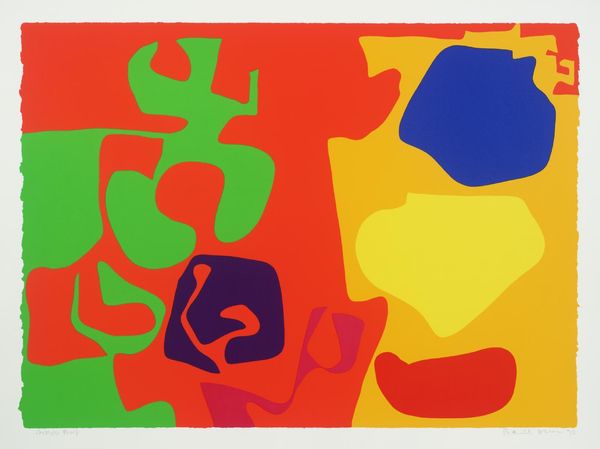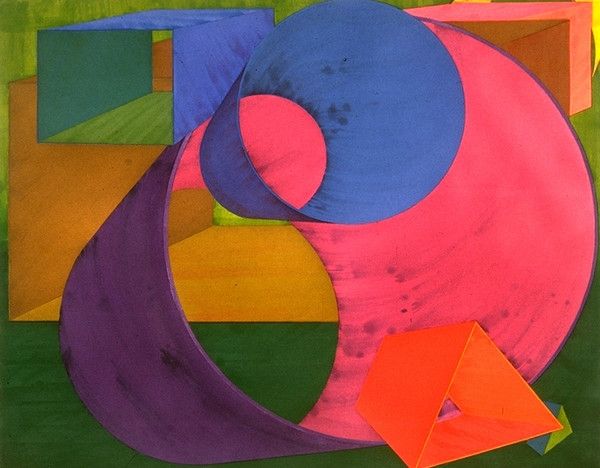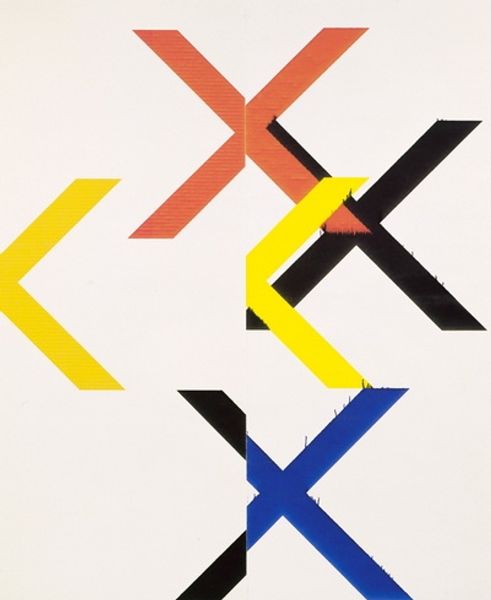
acrylic-paint
#
op-art
#
op art
#
pop art
#
acrylic-paint
#
geometric
#
abstraction
#
pop-art
Copyright: Jeremy Moon,Fair Use
Curator: Jeremy Moon’s "Cypher," painted in 1963, confronts us with a powerful, concentrated arrangement of geometric shapes rendered in stark colors. I see Op and Pop Art influences in this acrylic-on-canvas work. What's your immediate impression? Editor: Visually, the piece feels remarkably self-contained. There's a sense of a coded image, almost totemic, simplified to its very essence through color and form. Curator: Indeed, it’s important to remember Moon's place within the British art scene of the '60s. We see here a challenge to traditional art, engaging with a broader cultural shift of questioning norms. His deliberate abstraction seems almost like a political statement, refusing to reinforce old paradigms. Editor: Absolutely. But even in its political context, the chosen symbols vibrate with inherent, perhaps unconscious meanings. The lower rounded form evokes earthly elements, a kind of groundedness, while the diamond above... it's like a shard of something otherworldly pressing down, adding tension. Curator: I agree; that angularity breaks the soft curvilinear elements. You could look at it as a disruption of order and think about the disruptive element within 1960's counterculture challenging societal expectations. The work's impact resides in the push-pull dynamics. Editor: The color choices are bold and fascinating too, perhaps reflective of its own message. Orange like creativity and expression flowing against that stark yellow canvas! But still, all of this together feels a little oppressive too. The bright colours are unable to disguise this oppressive and aggressive feeling I am experiencing as a viewer. Curator: A very potent interpretation! I hadn't considered that contrast but there is definitely a darker edge to the image. We are now moving towards a fresh perception of this intriguing, historically anchored abstract composition by Jeremy Moon. Editor: Indeed! Moon’s "Cypher", as we come to better grasp it, seems a puzzle that transcends time, forcing an individual to re-evaluate visual languages, both past and present.
Comments
No comments
Be the first to comment and join the conversation on the ultimate creative platform.
